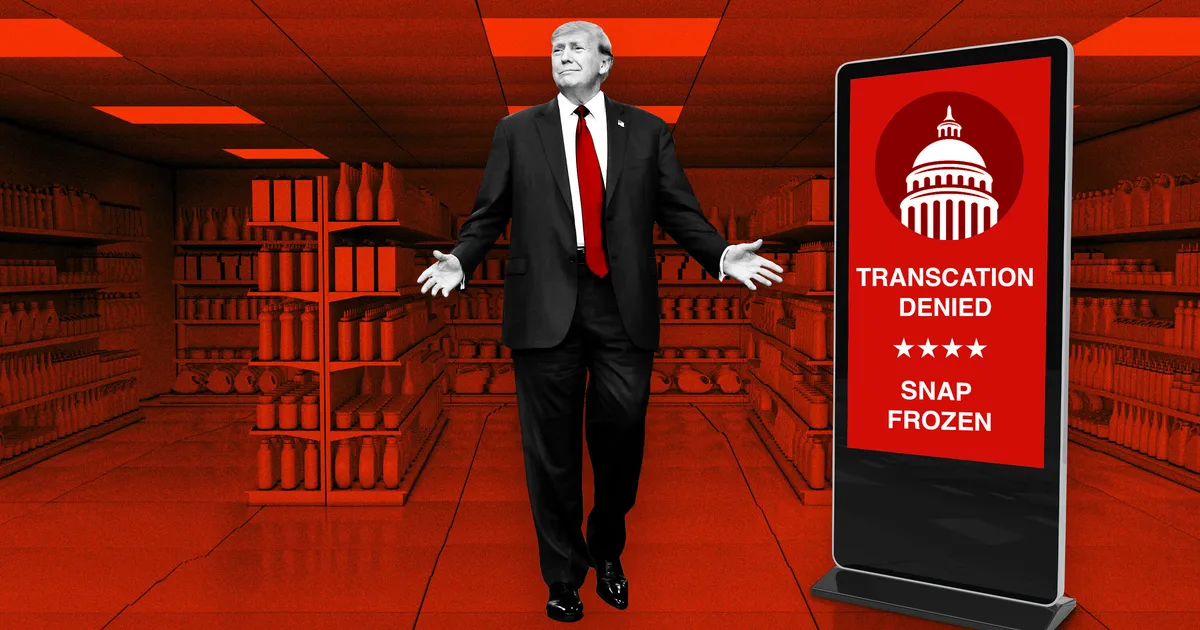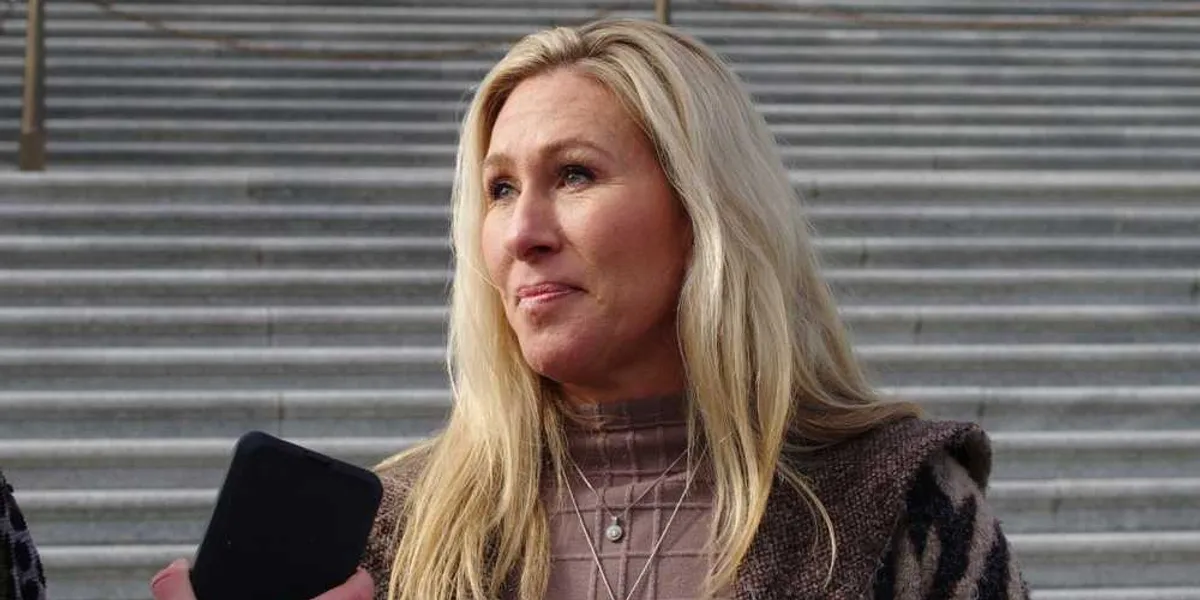Copyright HuffPost

LOADINGERROR LOADING Nearly 42 million people — or about 1 in 8 Americans — receive SNAP (short for the Supplemental Nutrition Assistance Program, formerly known as food stamps) each month to buy groceries. This includes children, older adults, people with disabilities, and working families struggling with low wages or reduced hours. It’s the nation’s most important anti-hunger program, but this weekend, the U.S. Department of Agriculture (USDA) confirmed that SNAP benefits for November will not go out in light of the ongoing government shutdown. Advertisement “Bottom line, the well has run dry. At this time, there will be no benefits issued November 01,” says a banner on the agency’s website. Food banks and anti-hunger advocates say they’re stunned that, as the shutdown drags into its fourth week, Americans who rely on food assistance could be caught in the crosshairs. A pause will “force families who are living paycheck to paycheck to make these impossible decisions,” said Bill Lee, the executive director of Martha’s Kitchen, a nonprofit that provides nearly 250,000 meals each month to those in need in San Jose, California. Advertisement “When safety nets like SNAP are removed, American families are forced to choose what basic needs they’ll fund this month: rent, medicine, diapers or food.” As families make these tough decisions, “Desperation will increase, more people will go hungry, some will end up hospitalized,” Lee told HuffPost. “It affects the entire community when those on the edge fall off the cliff.” Advertisement Food aid groups and anti-hunger advocates say the Trump administration is using SNAP benefits as a political cudgel. The looming cutoff to SNAP comes as Senate Democrats have said they won’t vote to reopen the government unless Republicans and President Donald Trump agree to extend the Affordable Care Act health care subsidies that are set to expire at year’s end. Democrats continue to lay the blame for the shutdown at Trump’s feet. The banner on the USDA website earlier this week had Republicans leaning into the political posturing even harder: They lambasted the Democrats but threw trans people and immigrants under the bus while they were at it. Advertisement “We are approaching an inflection point for Senate Democrats,” it reads. “They can continue to hold out for healthcare for illegal aliens and gender mutilation procedures or reopen the government so mothers, babies, and the most vulnerable among us can receive critical nutrition assistance.” It’s one of a number of politicized messages appearing on websites of federal agencies since the shutdown, which some legal experts say is a violation of federal ethics laws. Nicole Hunt, the director of public policy and advocacy at Food Bank For NYC, told HuffPost she was “deeply troubled” by the highly politicized language on the notification about SNAP benefits. Advertisement “Food should never be used as a political bargaining tool; it is a basic human right,” Hunt said. “The reality is that hunger impacts people in every corner of our country regardless of political party, and that preventing hunger in America has had long-standing bi-partisan support.” To frame this as a political fight between Democrats and Republicans only further dehumanizes Americans dealing with food insecurity, said Leeja Carter, the CEO and founder of Coalition for Food and Health Equity (CFHE). (Not to mention the lives of trans people and immigrants.) “Unless you’ve had a moment where you didn’t know where your next meal was coming from, you cannot truly understand why this matters so deeply,” Carter said. “Our government should be centering the lives, well-being and safety of the American people.” Advertisement It’s not just families experiencing food insecurity who are impacted when SNAP benefits are frozen. Every dollar spent on SNAP generates $1.79 in economic activity. (The original food stamp program was founded on the premise that the abundance of American agriculture could be shared with those who needed it, while benefiting farmers economically.) “Reducing benefits will affect job security among local businesses, farmers, and food retailer workers. When we cut nutrition assistance programs, we’re not just taking food off the table — we’re taking stability out of our communities,” said Amy Vu, the co-executive director at FEAST, a Los Angeles-based organization focused on combating food insecurity. Advertisement While SNAP is classified as a mandatory program, it requires congressional authorization for continued funding. Contingency fund accounts are supposed to be used for a case like this. But the Trump administration is refusing to use SNAP’s contingency reserves — which Congress provided for this exact purpose ― to cover all or part of the roughly $8 billion needed for November’s SNAP allotment. That position seemed to contradict a September contingency plan, since deleted from the USDA’s website, that said Congress intended “that SNAP’s operations should continue” and that contingency funds “are also available to fund participant benefits in the event that a lapse occurs in the middle of the fiscal year.” Advertisement On Tuesday, a coalition of more than two dozen Democratic attorneys general and Democratic governors from three states sued the Trump administration over its refusal to pay food benefits to 22 million households next month. As this drags out, food banks are now scrambling to fill in and make up the difference for their communities. Advertisement “While these programs were designed to be supplemental, for many families they make up their entire food budget,” Vu said. “We’ll likely see greater demand on food banks and local charities ― many of which are already stretched thin.” Lee, the executive director of Martha’s Kitchen, said his group has federal workers, long considered safely employed, reaching out to us now that they’ve gone without two paychecks. “Any of us are really just one accident, one tragedy, one ‘oops’ away from being a client at a food agency,” he said. Advertisement “Our government should be centering the lives, well-being, and safety of the American people.” There are ways you can help right now. Those affected by impending SNAP cuts could be your friends and neighbors, even if you aren’t aware of it. Besides recognizing how much of a global and national issue food insecurity is today, there’s a number of ways you can help those worried about their SNAP benefits. First, donate. Whether it’s $2, $15 or more, every dollar makes a difference to your local food bank. (Or consider donating to Feeding America, a nationwide network of food banks, food pantries and local meal programs.) Advertisement “That money turns into food in a refrigerator, groceries in someone’s kitchen, and the ability for a family to eat,” Carter said. “It also helps emergency food response organizations build the capacity they need to meet the influx that’s about to hit their doors.” Donate food. When you’re grocery shopping for yourself, double up on a few of the items ― especially canned goods and other food bank-identified staple items ― and drop them off at your local pantry or community fridge. Volunteer. “Our food pantries and emergency response organizations run on volunteer sweat, time and heart,” Carter said. Advertisement Look up your local food pantry or crisis response organization, and ask how you can help ― whether that’s packing, bagging, line control, or just being a supportive presence. “And if you can’t be there physically, offer your skills marketing, social media, communications are all ways to help these organizations be visible and well-resourced,” she said. Vote. Advertisement



